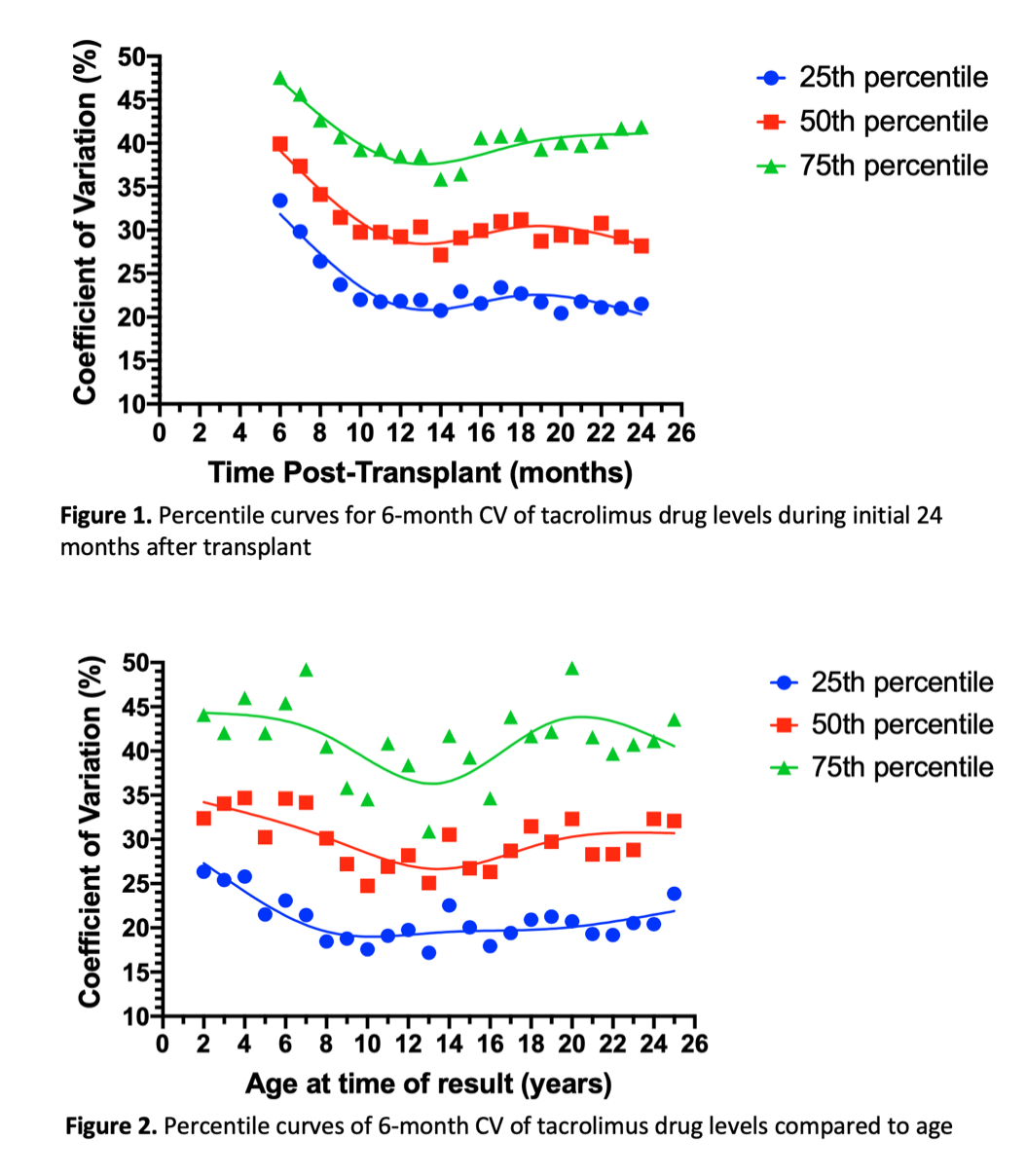High Intra-Patient Variability of Tacrolimus in Pediatric and Adolescent Renal Transplant Recipients is Associated with Worse Graft Outcomes
1Stanford University, Palo Alto, CA, 2Lucile Packard Children's Hospital Stanford, Palo Alto, CA, 3Landspitali - The National University Hospital of Iceland, Reykjavik, Iceland
Meeting: 2020 American Transplant Congress
Abstract number: 143
Keywords: Graft survival, Pediatric, Sensitization
Session Information
Session Time: 3:15pm-4:45pm
 Presentation Time: 4:15pm-4:27pm
Presentation Time: 4:15pm-4:27pm
Location: Virtual
*Purpose: High intra-patient variability (IPV) in tacrolimus (TAC) levels is associated with de novo donor-specific antibodies (dnDSA) and graft loss. We examined the natural history of TAC variability in pediatric renal transplant patients and the degree of variability in relation to poor graft outcomes.
*Methods: Children transplanted from 2010-2018 at a single center were considered for inclusion. dnDSA were identified by routine screening or at investigation of graft dysfunction. Patients with follow-up time of 12+ months were included. Primary outcome was development of C1q+ dnDSA >12 months post-transplant. All TAC levels in patients age 0-25 years transplanted from 2004-2019, with 2+ levels were analyzed. IPV was determined using the coefficient of variation (CV) over a 6-month time period for each TAC level.
*Results: A total of 251 pediatric renal transplant recipients were included. Median age was 11 years (range 11 months-24 years); 46% were female, and 23% received a living donor transplant. Median follow-up time was 88 months (range 12-122). 57 formed dnDSA by C1q, and 194 did not. 22.8% of patients with dnDSA by Cq1 lost their graft. In patients without dnDSA by C1q, 2.6% lost their graft (p<0.001). For baseline CV determination among the pediatric renal transplant population, a total of 31125 TAC levels (median 64.5, range 2-428) for 426 patients were analyzed. TAC was highly variable immediately post‑transplant and plateaued by 1 year post-transplant [Figure 1]. CV varied with age [Figure 2]. Median CV for the entire population was 29.5% (range 0.54-173.2%). Median CV for patients who developed dnDSA by C1q was 48.0% (range 19.3-97.5%). CV in dnDSA formers was compared to baseline CV by age subgroups, 0-12 years and 13-25 years (p<0.0001 for both comparisons) using the Mann-Whitney test [Figure 3].
*Conclusions: High TAC IPV was associated with dnDSA formation. Understanding patterns in IPV may allow for targeted interventions to improve long-term graft survival and outcomes.
To cite this abstract in AMA style:
Piburn K, Maestretti L, Shetty R, Patton MV, McGrath A, Concepcion W, Chaudhuri A, Grimm PC, Sigurjonsdottir VK. High Intra-Patient Variability of Tacrolimus in Pediatric and Adolescent Renal Transplant Recipients is Associated with Worse Graft Outcomes [abstract]. Am J Transplant. 2020; 20 (suppl 3). https://atcmeetingabstracts.com/abstract/high-intra-patient-variability-of-tacrolimus-in-pediatric-and-adolescent-renal-transplant-recipients-is-associated-with-worse-graft-outcomes/. Accessed December 19, 2025.« Back to 2020 American Transplant Congress


